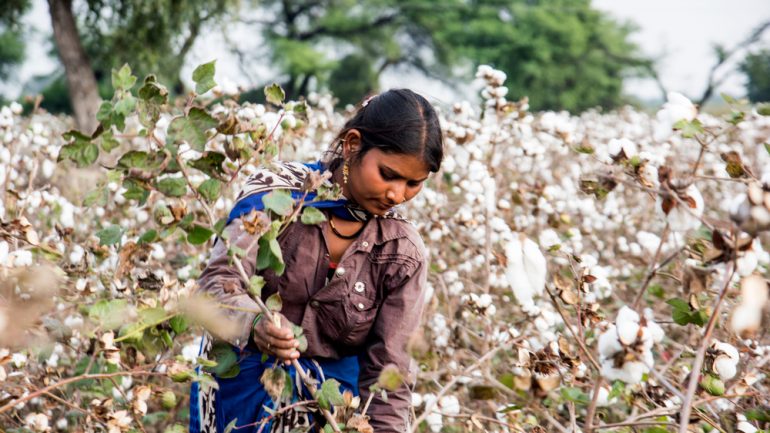Fashion brands urged to drive biodiversity in cotton supply chain

FASHION BRANDS URGED TO DRIVE BIODIVERSITY IN COTTON SUPPLY CHAIN
The report titled ‘Cotton and Biodiversity’ says cotton farming has a clear role to play in restoring and maintaining biodiversity across its vast growing regions.
However, there are four major contributing factors to biodiversity loss that cotton industry stakeholders must urgently address:
- Heavy use of agrochemicals – Implementing nature-positive farming approaches, like organic and regenerative agriculture, or integrated pest-management (IPM) strategies, can have notable advantages for biodiversity.
- Monocultures – Sustainably managed crop rotation and intercropping can positively impact local biodiversity while improving pest management and providing farmers with economic benefits.
- Land conversion – Climate change may soon force cotton farmers to convert more natural land for agricultural use. This means we must consider how we can mitigate the impact of this on species and ecosystems. High conservation value assessments can support farmers and farming organisations to do this.
- Poor water management – Implementing modern irrigation methods, cover cropping and other sustainable agricultural practices that reduce use of freshwater supplies can support biodiversity. There are also techniques to avoid increased salinization of cotton farming land, though these can be costly to implement.
Advice for fashion brands on how to drive biodiversity in the cotton supply chain
Consumers are concerned about sustainability and biodiversity loss and expect brands to change their behaviour. As the community with the greatest share of money and influence in the value chain, cotton retailers
and brands must be a driving force for good.
Take responsibility for your value chain by investing in producers:
Go beyond purchasing cotton from certified sources; establish sustainability budgets to invest in farmers’ transition to nature-positive practices that enhance biodiversity.
Help consumers understand the social and environmental sustainability challenges in your supply chain and the need to act.
Directly reward farmers in your value chain by making use of innovative investment tools, such as carbon insetting programmes.
Support certification standards to add more value:
Standards systems are crucially addressing some of the worst harms in cotton production. Encourage them to raise their ambition; move from sustainable to regenerative practices, prove their impact and involve farmers even more.
Only adopt standards that have strong commitments to reducing agrochemical use and farmer training in nature-positive approaches. This should include an overall reduction in agrochemical use and phasing out highly hazardous pesticides by 2030.
Proactively engage with multi-stakeholder initiatives (MSIs). They can play a critical role in providing forums and interventions to address issues in the cotton value chain:
Engage with MSIs that bring smallholder farmers, workers and other supply chain actors to the table in a meaningful way.
Enhance partnerships with producer organisations to support and enable genuine participation.
Improve purchasing practices:
Enable long-term contracts for producers with a sufficiently high farm gate price to afford a living income and the transition to farming practices that promote biodiversity.
Raise the bar on transparency:
Embrace due diligence; know exactly where your cotton comes from, be publicly transparent about it, and ensure you are paying suppliers sufficiently to facilitate traceability and promote biodiversity.
Take responsibility for your value chain by investing in
producers:
Include cotton farming in your due diligence to identify, mitigate, and remedy risks at the root.
Advice for other supply chain stakeholders
The report advises farmer organisations and standards systems to invest resources in training farmers and workers on biodiversity-enhancing and socially responsible farming practices.
While, governments are advised to support and strengthen public institutions’ and universities’ research into cotton seed development, input optimisation and effective crop combinations to enhance biodiversity.
